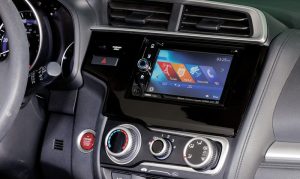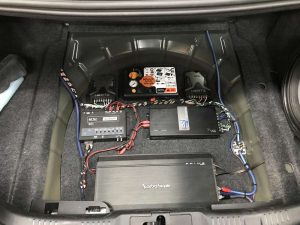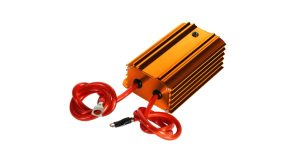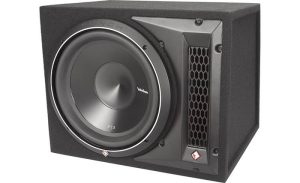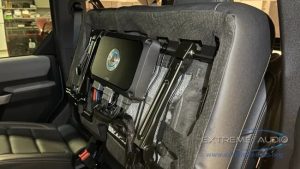Choosing the right car stereo transforms your driving experience. A high-quality audio system delivers crisp sound, seamless smartphone integration, and intuitive controls. Pioneer, Kenwood, and Alpine dominate the car audio market, each offering unique strengths. This guide compares these top brands to help you pick the perfect head unit, speakers, and amplifiers for your vehicle in 2025. Expect a deep dive into sound quality, features, pricing, and real-world performance, ensuring you make an informed decision.
Contents
- Why Choose a Premium Car Stereo?
- Brand Overviews
- Sound Quality Comparison
- Feature Breakdown
- Product Highlights
- Pricing and Value
- Durability and Reliability
- Installation and Compatibility
- Community Feedback and Real-World Insights
- Which Brand Suits You?
- Tips for Choosing Your Car Stereo
- Future Trends in Car Audio
- Conclusion
Why Choose a Premium Car Stereo?
A factory-installed stereo often falls short for music lovers. Distortion at high volumes, limited connectivity, and outdated interfaces frustrate users. Upgrading to a Pioneer, Kenwood, or Alpine system solves these issues. These brands prioritize crystal-clear audio, modern features like Apple CarPlay and Android Auto, and durable designs. Whether you crave booming bass, sharp vocals, or hands-free navigation, a premium stereo elevates every drive.
Brand Overviews
Pioneer: Innovation and Versatility
Pioneer, a Japanese brand since 1938, leads in car audio innovation. Known for vibrant sound and cutting-edge technology, Pioneer caters to audiophiles and casual listeners alike. Their head units feature touchscreen displays, Bluetooth connectivity, and robust equalization options. Pioneer’s Advanced Sound Retriever enhances compressed audio, making streaming services like Spotify sound richer. From budget-friendly single-DIN receivers to high-end double-DIN multimedia hubs, Pioneer offers something for everyone.
Kenwood: Precision and Durability
Kenwood, another Japanese giant founded in 1947, excels in delivering precise, balanced audio. Their products emphasize durability and user-friendly interfaces. Kenwood’s Excelon line, in particular, earns praise for high-powered amplifiers and advanced digital signal processing (DSP). With seamless smartphone integration and multi-camera inputs, Kenwood suits tech-savvy drivers. Their stereos strike a balance between affordability and premium performance, appealing to a wide audience.
Alpine: Premium Sound and Sleek Design
Alpine, established in 1967, focuses on high-end audio and navigation systems. Renowned for crisp, airy sound, Alpine appeals to audiophiles who prioritize clarity. Their head units, like the iLX-W650, combine sleek designs with powerful features, such as nine-band parametric equalizers and wireless CarPlay. Alpine’s premium pricing reflects its focus on quality, though budget options exist. Their systems shine in custom setups with external amplifiers and subwoofers.
Sound Quality Comparison
Sound quality drives the decision for most car audio upgrades. Each brand approaches audio differently, catering to varied preferences.
Pioneer’s Immersive Soundstage
Pioneer delivers a warm, dynamic sound that fills the cabin. Their head units, like the AVH-W4500NEX, use proprietary technologies to enhance audio playback. The Advanced Sound Retriever restores lost details in compressed files, ideal for streaming. Pioneer’s speakers, such as the TS-Z65CH, handle high power, producing punchy bass and clear mids. However, some users note that Pioneer’s tweeters can sound piercing at high volumes, requiring careful tuning.
Kenwood’s Balanced Clarity
Kenwood prioritizes accuracy, making it a favorite among audiophiles. Their Excelon DDX9907XR head unit features a 13-band equalizer for precise sound adjustments. Kenwood speakers, like the XR-1701P, offer durable construction and balanced output, excelling in vocals and instrumentals. Bass-heavy listeners may need a subwoofer to round out the low end, as Kenwood leans toward clarity over thump.
Alpine’s Crisp Precision
Alpine’s sound signature emphasizes sharpness and detail. The iLX-207, with its nine-band parametric EQ, allows fine-tuned control, producing crystal-clear highs and tight mids. Alpine speakers, such as the R-S65C.2, excel in sound quality but offer fewer models than competitors. For optimal performance, pair Alpine head units with their high-end amplifiers, as stock setups may lack bass depth.
In short, Pioneer suits bass lovers, Kenwood balances all frequencies, and Alpine shines for vocal and instrumental clarity. Test systems in person to match your music taste.
Feature Breakdown
Modern car stereos go beyond sound, offering connectivity, navigation, and customization. Here’s how the brands stack up.
Connectivity and Smartphone Integration
All three brands support Apple CarPlay, Android Auto, and Bluetooth, but differences emerge in execution. Pioneer’s AVH-W4500NEX offers wireless CarPlay and Android Auto, reducing cable clutter. Kenwood’s DMX957XR Excelon matches this, adding multi-camera inputs for enhanced safety. Alpine’s iLX-507 supports wired connections, which some users find less convenient. Kenwood and Pioneer also handle high-resolution FLAC and WAV files, while Alpine lags in format support.
User Interface and Controls
Pioneer’s touchscreen interfaces, like those on the DMH-W4660NEX, respond quickly and display vibrant graphics. Kenwood’s minimalist designs, seen in the KMM-BT328U, prioritize ease of use, with tactile volume knobs on some models. Alpine’s iLX-W650 offers a sleek 7-inch display but requires the TuneIt app for advanced tuning, which adds complexity. Kenwood wins for intuitive controls, while Pioneer excels in visual appeal.
Equalization and Tuning
Customization defines a great stereo. Kenwood’s 13-band graphic equalizer, found in the DDX9906XR, allows precise tweaks across frequencies. Pioneer’s parametric and graphic equalizers, as in the DEH-80PRS, offer similar flexibility, though setup can feel complex. Alpine’s nine-band parametric EQ, available in the CDE-HD149BT, provides detailed control but demands technical know-how. Kenwood’s interface makes tuning accessible to beginners.
Expandability
For custom setups, expandability matters. Pioneer and Kenwood offer multiple pre-outs for connecting external amplifiers and subwoofers. The Pioneer DMH-Z6350BT supports active three-way crossovers, ideal for advanced systems. Kenwood’s Excelon units include DSP bypass options for external processors. Alpine’s AI-Net outputs, seen in older models, cater to competition-grade setups but are less common in newer units. Pioneer leads for versatility.
Product Highlights
Pioneer: AVH-W4500NEX
This double-DIN receiver features a 6.94-inch touchscreen, wireless CarPlay, and Android Auto. Its high-quality audio, driven by Advanced Sound Retriever, suits streaming and USB playback. With robust pre-outs and a 13-band equalizer, it supports complex setups. Priced around $600, it’s a premium choice for feature-rich systems.
Kenwood: Excelon DDX9907XR
A 6.8-inch HD display anchors this multimedia receiver. Wireless CarPlay, Android Auto, and a 13-band EQ deliver top-tier performance. Four-camera inputs enhance safety, while high-powered amplifiers ensure loud, clear sound. At $700, it’s a strong contender for tech-focused drivers.
Alpine: iLX-W650
This 7-inch touchscreen unit offers wired CarPlay and Android Auto. Its nine-band parametric EQ and built-in amplifier produce crisp audio. Priced at $300, it’s budget-friendly but lacks wireless connectivity and multi-camera support. Pair it with Alpine amplifiers for best results.
Pricing and Value
Pricing varies by brand and model, reflecting features and performance.
Pioneer’s Range
Pioneer offers budget options like the DEH-150MP ($100) and high-end units like the AVH-W4500NEX ($600). Their mid-range receivers, around $200–$400, balance cost and features. Pioneer’s speakers start at $50 per pair, with premium models like the TS-Z65CH costing $150. Amplifiers range from $100 to $500, making Pioneer accessible across budgets.
Kenwood’s Competitive Pricing
Kenwood’s entry-level KMM-BT328U costs $120, while the Excelon DDX9907XR reaches $700. Speakers, like the XR-1701P, start at $80, with high-end models at $200. Kenwood amplifiers, priced between $150 and $600, deliver strong value. Their mid-range head units, around $300, offer premium features at reasonable costs.
Alpine’s Premium Positioning
Alpine’s CDE-172BT starts at $150, but premium units like the iLX-507 cost $500. Speakers range from $100 to $250, with fewer options than competitors. Amplifiers, priced $200–$700, target high-end setups. Alpine’s higher prices reflect superior build quality, though budget-conscious buyers may find better value elsewhere.
For value, Kenwood and Pioneer offer more affordable options, while Alpine justifies its cost with premium sound and durability.
Durability and Reliability
Reliability ensures your stereo lasts. Pioneer’s units, like the DEH-80PRS, earn praise for longevity but face criticism for grounding issues in some models. Kenwood’s Excelon line boasts robust construction, though lower-end units may use outsourced components, raising concerns. Alpine’s in-house manufacturing, as seen in the iLX-W650, ensures consistent quality, but availability has declined. Kenwood and Alpine edge out Pioneer for reliability, based on user feedback.
Installation and Compatibility
Installation impacts your upgrade experience. All three brands design user-friendly head units, but professional installation optimizes performance. Pioneer’s DMH-Z6350BT requires extra grounding for some features, which can complicate setups. Kenwood’s single-plug designs simplify wiring, though dual-plug models raise quality concerns. Alpine’s compact units, like the iLX-W650, fit most dashboards but may need adapters for steering wheel controls. Check vehicle compatibility before buying.
Community Feedback and Real-World Insights
Car audio enthusiasts on forums like Reddit and DIYMobileAudio share valuable insights. Pioneer’s DSP and crossover options win fans for custom setups, but some report slow interfaces. Kenwood’s Excelon units earn consistent praise for sound and reliability, though screen dimming issues annoy users. Alpine’s sharp sound impresses, but limited wireless features and complex tuning frustrate some. Testing units at a retailer like Crutchfield helps confirm preferences.
Which Brand Suits You?
Your choice depends on priorities:
- Pioneer: Ideal for bass-heavy music and versatile features. Pick Pioneer if you want vibrant sound, wireless connectivity, and expandability at a mid-range price.
- Kenwood: Best for balanced audio and user-friendly controls. Choose Kenwood for durability, precise tuning, and value, especially in the Excelon line.
- Alpine: Perfect for audiophiles seeking crisp, detailed sound. Opt for Alpine if you prioritize premium quality and plan to add amplifiers.
Tips for Choosing Your Car Stereo
- Define Your Budget: Set a range ($100–$700) to narrow options.
- Prioritize Features: Decide if wireless CarPlay, multi-camera support, or EQ options matter most.
- Test in Person: Visit a retailer to compare sound and interfaces.
- Check Compatibility: Ensure the head unit fits your vehicle and supports existing speakers or amplifiers.
- Read Reviews: Explore user feedback on forums and sites like Crutchfield for real-world insights.
Future Trends in Car Audio
Car audio evolves rapidly. In 2025, expect tighter integration with AI assistants, enhanced wireless connectivity, and improved DSP for personalized sound. Pioneer, Kenwood, and Alpine continue to innovate, with Kenwood leading in camera integration and Pioneer pushing touchscreen advancements. Alpine’s focus on high-end audio ensures it remains a premium choice. Stay updated on new releases to catch the latest features.
Conclusion
Pioneer, Kenwood, and Alpine offer distinct strengths in the car audio world. Pioneer delivers immersive sound and versatility, Kenwood balances clarity and value, and Alpine excels in premium audio quality. Consider your music preferences, budget, and desired features when choosing. Test systems in person, check compatibility, and read user reviews to ensure satisfaction. With the right stereo, every drive becomes a concert on wheels.

